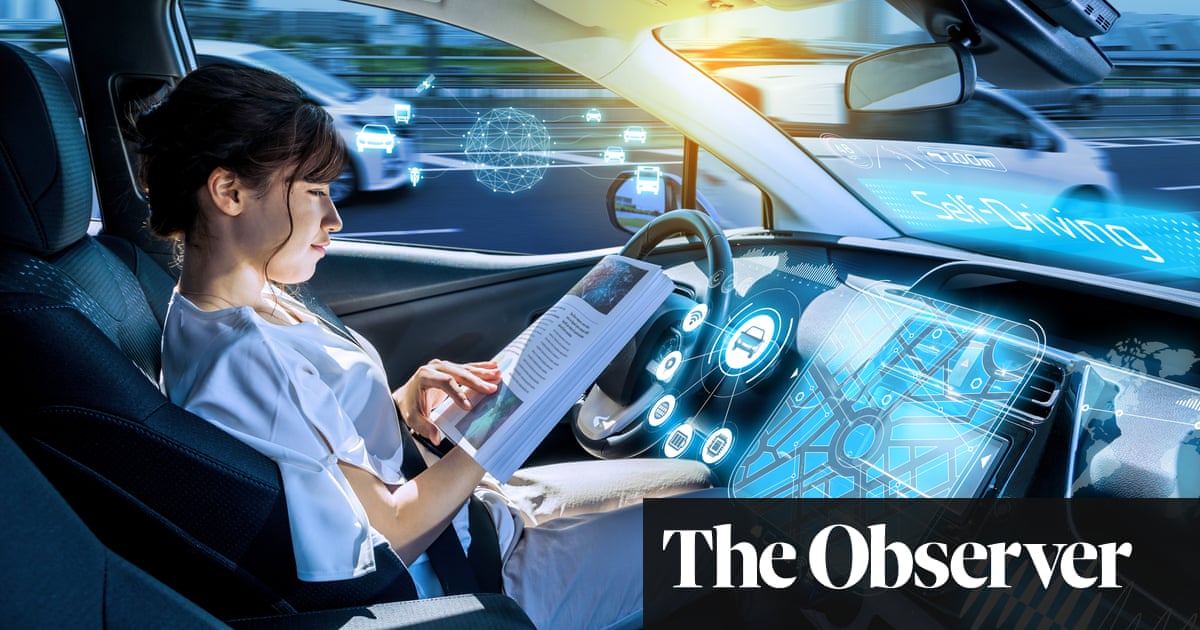
y 2021, according to various Silicon Valley luminaries, bandwagoning politicians and leading cab firms in recent years, self-driving cars would have long been crossing the US, started filing along Britain’s motorways and be all set to provide robotaxis in London.
1 January has not, however, brought a driverless revolution. Indeed in the last weeks of 2020 Uber, one of the biggest players and supposed beneficiaries, decided to park its plans for self-driving taxis, selling off its autonomous division to Aurora in a deal worth about $4bn (£3bn) – roughly half what it was valued at in 2019.
The decision did not, Uber’s chief executive protested, mean the company no longer believed in self-driving vehicles. “Few technologies hold as much promise to improve people’s lives with safe, accessible, and environmentally friendly transportation,” Dara Khosrowshahi said. But more people might now take that promise with a pinch of salt.
Prof Nick Reed, a transport consultant who ran UK self-driving trials, says: “The perspectives have changed since 2015, when it was probably peak hype. Reality is setting in about the challenges and complexity.”
Automated driving, says Reed, could still happen in the next five years on highways with clearly marked lanes, limited to motorised vehicles all going in the same direction. Widespread use in cities remains some way further out, he says: “But the benefits are still there.”
The most touted benefit is safety, with human error blamed for more than 90% of road accidents. Proponents also say autonomous cars would be more efficient and reduce congestion.
Looking back, Reed says “the technology worked … people had the sense, it does the right thing most of the time, we are 90% of the way there. But it is that last bit which is the toughest. Being able reliably to do the right thing every single time, whether it’s raining, snowing, fog, is a bigger challenge than anticipated.”
Waymo, the Google spin-off that has led the field, could be a case in point: having quickly wowed the world with footage of self-driving cars, the subsequent steps have appeared small.
In October last year it announced the public could now hail fully driverless taxis, “in the near term” without a safety driver in any car – although the range remains limited to the sunny suburbs of Phoenix, Arizona, whose every centimetre has been mapped by Waymo computers.
Elsewhere, robotaxis have stalled. Like Uber, the cab firm Addison Lee had staked out bold ambitions, signing up with the UK autonomy pioneer Oxbotica in 2018 to get robotaxis into London by 2021.
That deal was quietly dropped in March last year, under new ownership. Addison Lee’s chief executive, Liam Griffin, said: “Driverless cars are best left to the OEMs [manufacturers], and don’t form part of our current plans.”
The launch of an autonomous taxi service by Ford has also been postponed at least a year to 2022 because of the pandemic.
“Globally, Covid-19 has delayed trials and launches of connected and automated vehicles,” says Mike Hawes, the chief executive of the Society of Motor Manufacturers and Traders.
Regulatory changes could still allow developments such as Automated Lane Keeping Systems being rolled out in 2021 across everyday cars.
“ALKS is the first version of automated driving technology which could prevent some 47,000 serious accidents over the next decade, while creating up to 420,000 new jobs,” Hawes said.
The system could let the car take control on UK motorways thisyear – although insurers are trying to talk the government out of giving the go-ahead.
Alexandra Smyth, who leads on autonomous systems at the Royal Academy of Engineering, said: “There’s lots of progress and interesting developments with regulations and codes of practice – all important components that sit alongside the technology itself. But realistically there are still going to be errors and things that don’t perform as we hoped. Public trust will be one of the major hurdles.”
Fears were stoked after Uber’s self-driving car killed a pedestrian in Arizona in 2018. And despite Elon Musk’s continuing bold claims for Tesla, and reports that Apple is still secretly pushing to develop a personal autonomous vehicle by 2024, the law is unlikely to permit drivers to relinquish the wheel soon.
According to Christian Wolmar, the author of Driverless Cars: On a Road to Nowhere?, problems such as social acceptance, cybersecurity and cost have never been addressed.
He says: “People do not want to replace the car outside the front door with an app it’s just not a viable concept. I think more and more people are sceptical of the model that we’ll all be in robocars soon. Instead, the industry is now talking about specific uses.”
If Oxbotica’s Paul Newman, one of the Oxford University professors pioneering Britain’s autonomous industry, has any doubts over the long term, he is not showing it – although he says the level of autonomy where “occasionally there might be a remote assist” is a far more achievable ambition than a world where the machines can entirely get on with it.
Oxbotica is running a fleet of autonomous Ford Mondeos on public roads in a trial in Oxford – but the technological progress, he says, is not about robotaxis: “It’s purely about the software, it’s agnostic about the vehicles.”
The driverless car world, he says, is “a great moonshot”: cars are a huge market but also the hardest to transform, long after autonomous mining or rail or shuttle services are in place.
Newman compares the progress with mobiles phones, recalling the first he saw, wielded by Danny Glover in the 1987 film Lethal Weapon, which was the size of a small suitcase.
“Is a future of driverless cars coming? Assuredly as mobile phones. This is the normal cycle that technology goes through. We’re still moving along that graph,” he said.
“We’ve gone through the flashy stage, when we’ve said it’s six months away … Now we’ve got engineers saying this is properly hard.”












